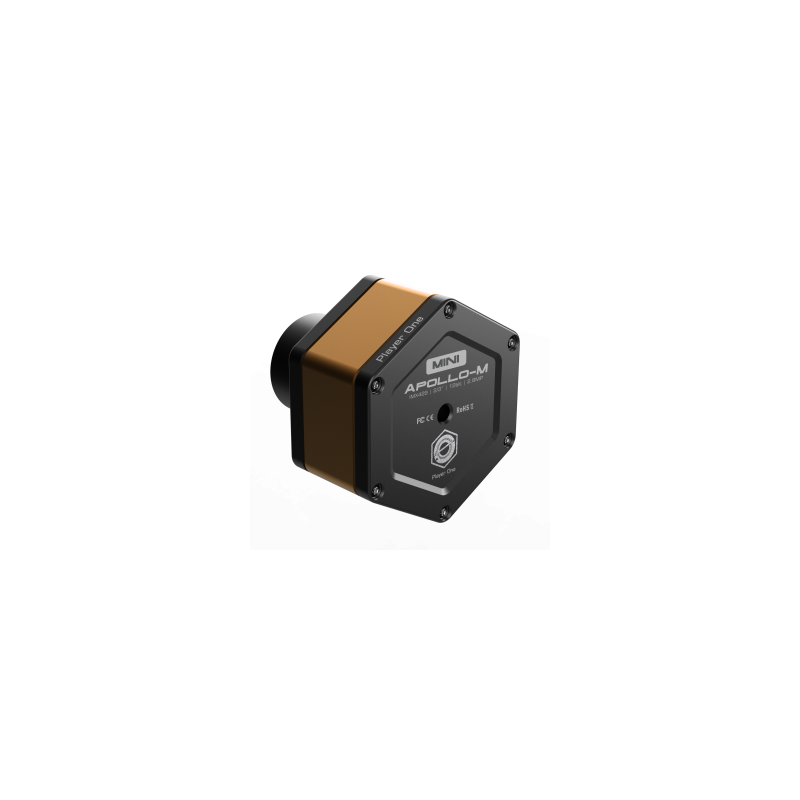
Reference: ZWEAF-N
Brand: ZWO
Reference: ZWEAF-N
Brand: ZWO
Reference: POA-URANUS-C
Brand: Player One
Reference: POA-ACS
Brand: Player One
Reference: AS-FRA400
Brand: ASKAR - Sharpstar
Reference: ZWASI120MINI
Brand: ZWO
Reference: AS-SET-DUO-D1D2
Brand: ASKAR - Sharpstar
Reference: ZWDC-Y-SPLIT
Brand: ZWO
Reference: AS-REDFRA400
Brand: ASKAR - Sharpstar
Banner














 security
security
100% Secure Payment
 Delivery policy
Delivery policy
Express shipping of in-stock parts
 RETURN POLICY
RETURN POLICY
Express shipping of in-stock parts
Apollo series is the world’s first camera line designed specifically for solar photography, named after Apollo.
The Apollo series features Sony sensors with global shutters and a focus on monochrome sensors.
WARNING
Solar cameras are cameras optimized for solar. In no case should be used without filter full solar opening or specific solar telescope. |
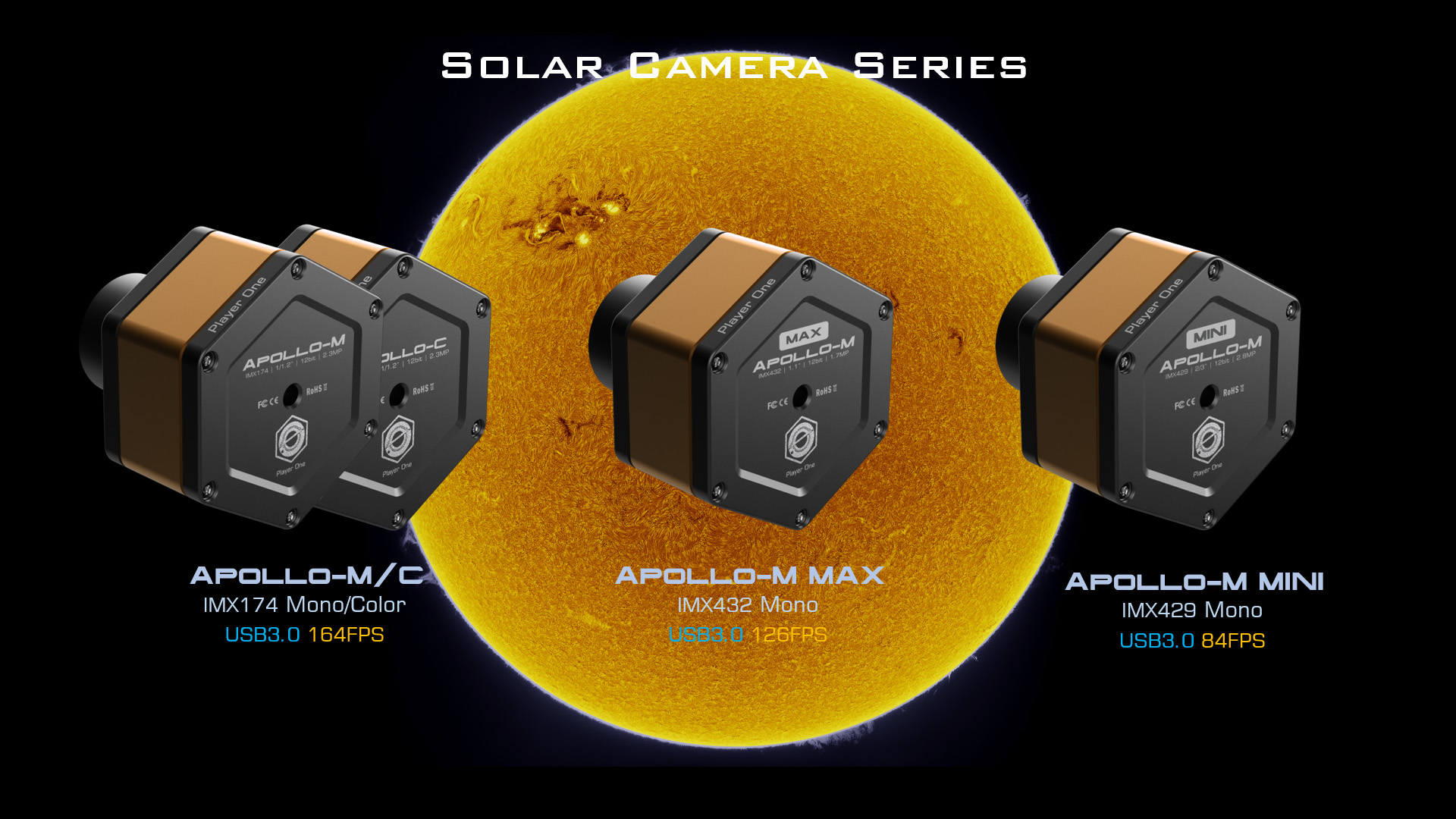
Apollo-M MINI is a solar camera developed by Player One Astronomy, which adopts the Sony IMX429 2/3” format monochrome sensor. The 4.5um pixel size accommodates a well depth of 24.8Ke with a total of 2.8MP (the resolution is 1944*1472), and the diagonal is 11mm.
IMX429 sensor is based on Pregius 3rd Generation. According to the introduction of technical documents, pixel size of 3rd Gen usually is 4.5um, and full well is 25Ke.

IMX429 has 2/3″ format, this size is between IMX178 and IMX174.
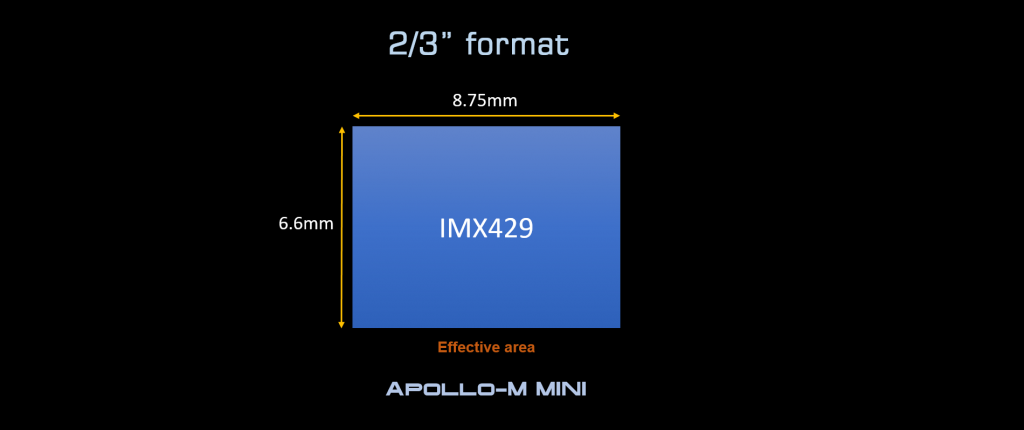
4.5um pixel size is smaller than IMX174 camera, which means it can works provide higher resolution in same focal length.
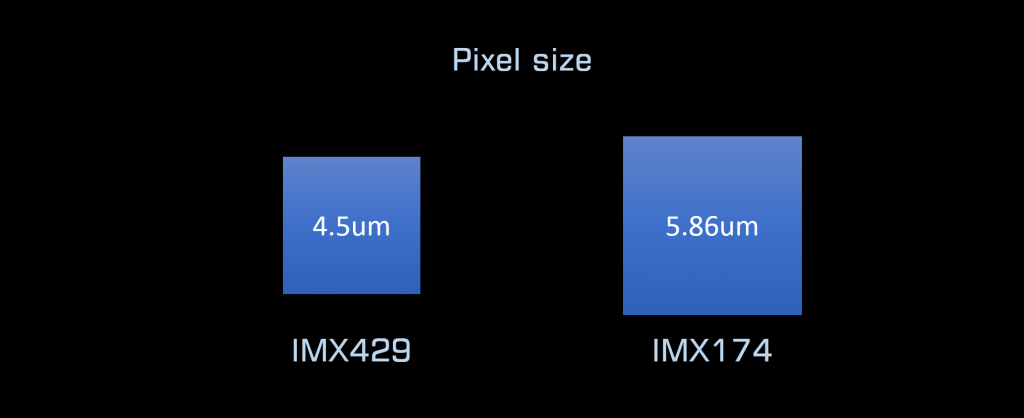
Apollo-M MINI has HCG mode, when Gain>71 HCG will open automatically.
When taking solar photograph with prominence telescope, the Newton ring is annoying. Smoother solar image without Newton ring could be taken by adjusting the focal plate. Get a much smaller field curvature of the telescope.

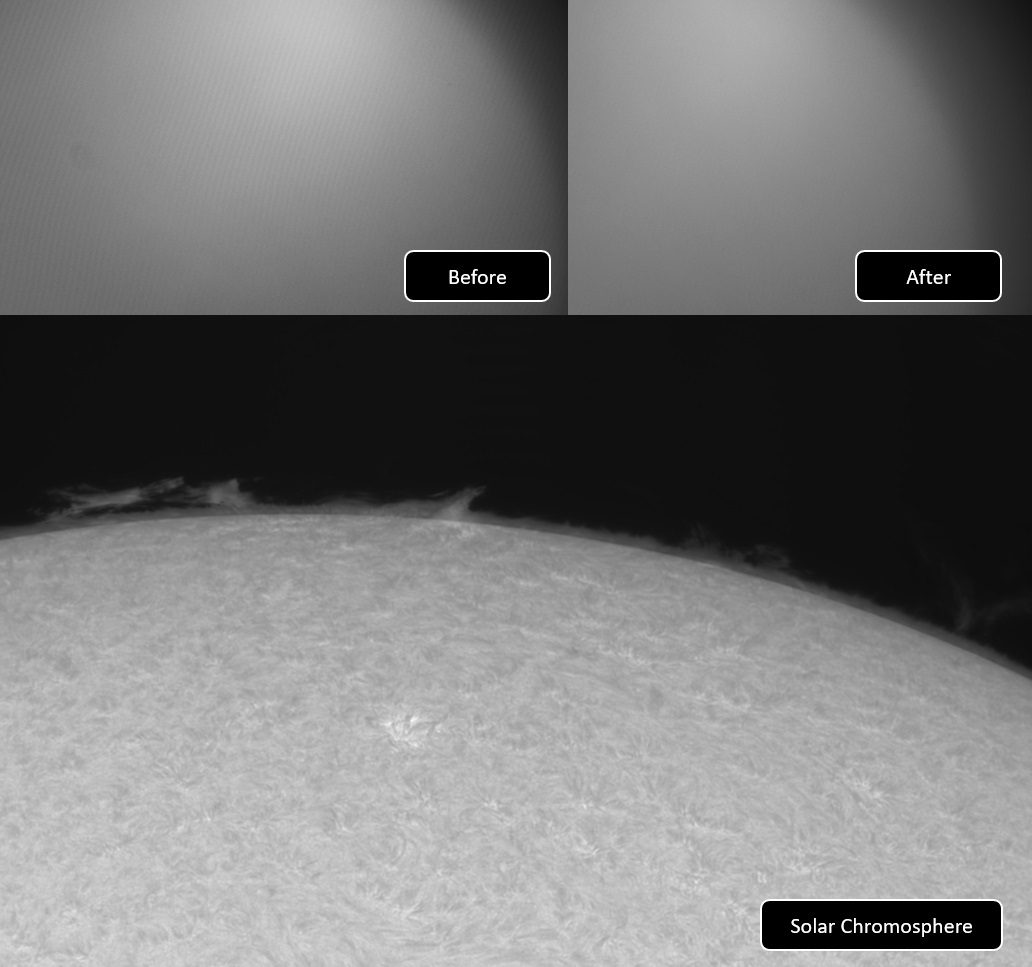
Player One Astronomy cameras are the first one who adpots the DDR3 cache in all planetary cameras in the world! It helps stabilize and secure data transmission, it effectively avoids frame dropping and greatly reduces readnoise.
With the DDR3 cache, the camera does not have high demands on computing needs any longer, it will still has excellent performance even if it is connected to a USB 2.0 port.
%20%E2%80%93%20Player%20One%20Astronomy.png)
The planetary cameras from Player One Astronomy have DPS (Dead Pixel Suppression) technology. The DPS is anaylse many dark frames to find out thoes fixed abnormal pixel and record the map in camera memory. In imaging, each exposure frames, thoes position of dead pixels will be given a median value according to the active pixels around that abnormal pixel.
%20%E2%80%93%20Player%20One%20Astronomy.png)
Solar cameras working in daylight, temperature could be much higher than night. Heat of global shutter sensors will be a problem, especially some big format like IMX432. Player One add a new feature called Passive Cooling System to conduct the heat from the sensor out.

Player One cameras produced by the number one player ensures the safety of your camera and other equipment through overvoltage and overcurrent protection mechanisms.
When the camera is connected to the USB3.0 interface and full-resolution preview is used, it can reach 164 FPS in RAW8 mode (10bit ADC). When recording images, since the actual writing speed will be affected by the writing speed of the hard disk itself, when the hard disk writing speed is slow, the recording may not reach the theoretical speed. It is recommended that you use a high-quality solid state drive to record data to give full play to the performance of the camera.
Use the ST4 guide cable to connect the camera and the AUTO GUIDE port of the equatorial mount to do guiding.
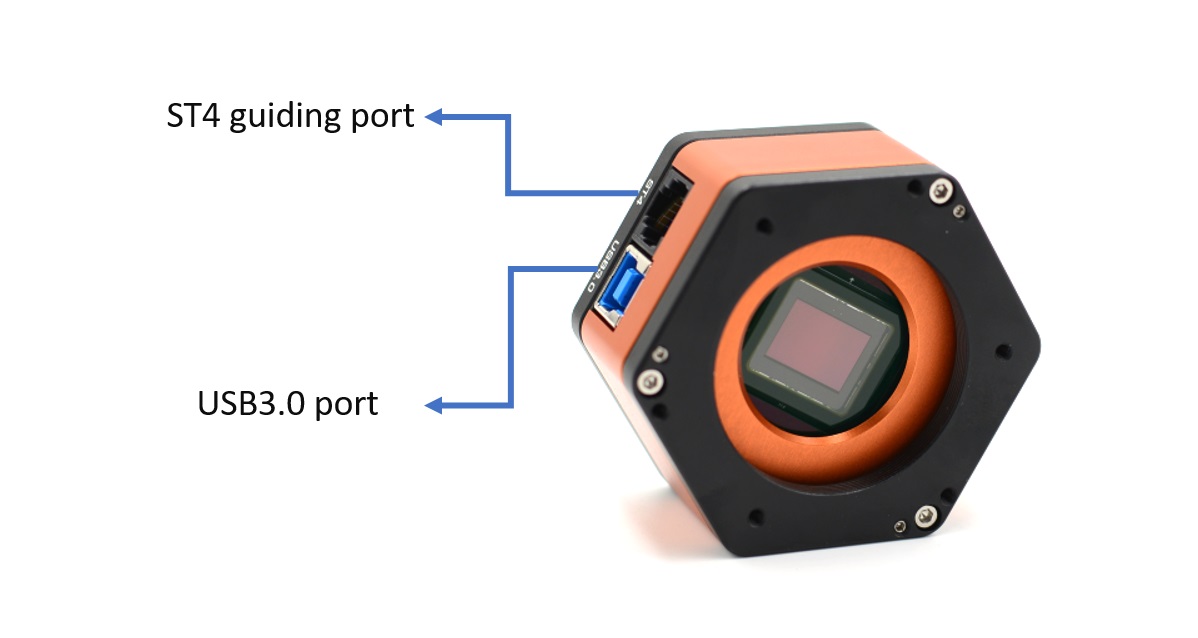
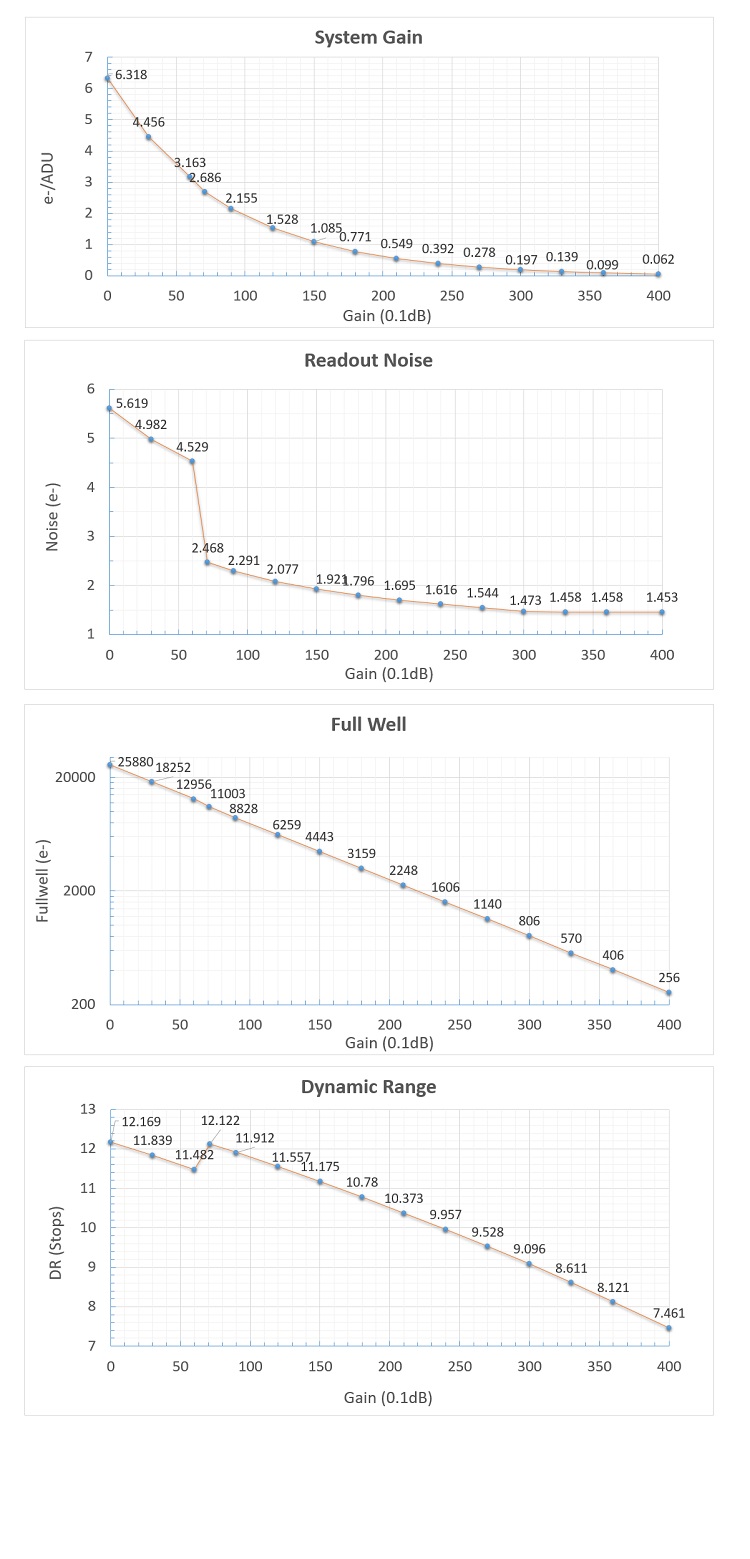
Regarding readout noise, we solemnly promise that all values are obtained from actual tests. And for users, you could use Sharpcap 4 for testing. SC4 has a function called Sensor Analysis, provide a very simple way to test readout noise.
After many rigorous readout noise tests, this camera can reach a low readout noise of 1.45e at a gain of 380.
If you are interested in readout noise testing, you may try it yourself, which is very simple.
Absolute Peak Value is about 77%.


Data sheet
No customer reviews for the moment.
Reference: POA-APOLLO-M
Brand: Player One
Reference: POA-APOLLO-M-MAX
Brand: Player One
Reference: POA-APOLLO-C
Brand: Player One
Reference: POA-APOLLO428M-MAX-PRO
Brand: Player One
Reference: POA-ACS
Brand: Player One
Reference: POA-PS125-7nm
Brand: Player One

check_circle
check_circle